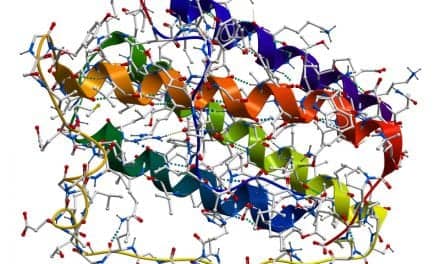The brains of people under anesthesia respond to stimuli the same way they do in the deepest part of sleep, according to new research by scientists at the University of Wisconsin School of Medicine and Public Health. The findings lend weight to a developing theory of consciousness and suggest a new method to assess loss of consciousness in conditions such as coma, say the reseachers. Lead researcher Fabio Ferrarelli, MD, PhD, reported the findings in the Proceedings of the National Academy of Science.
To conduct the study, the researchers gave participants the anesthetic midazolam, which is commonly used at lower doses in "conscious sedation" procedures such as colonoscopies.
The researchers then used a noninvasive technique called transcranial magnetic stimulation (TMS) to stimulate the brain cortical neurons from the scalp, in combination with electroencephalography (EEG), which recorded the TMS-evoked brain responses. Through this, the researchers found a pattern that looks much as it does when the brain is in deep, non-rapid eye movement (non-REM) sleep.
According to the researchers, when the brain is unconscious, it appears to lose the connectivity that underlies the coordinated, yet differentiated responses to electrical stimuli observed when the brain is awake or in REM sleep.
"Based on a theory about how consciousness is generated, we expect to see a response that is both integrated and differentiated when the brain is conscious," said coauthor Giulio Tononi, MD, PhD. "When there is a loss of consciousness, due to either sleep or anesthesia, the response is radically different. We see a stereotyped burst of activity that remains localized and fades quickly."
The team believes that the response patterns observed in the awake brain, characterized by long-lasting activations moving over time to different cortical areas, reflect the connectivity of the cortical areas activated by TMS.
This could be because when a person is awake, the cortex is involved in many activities that require a constant communication between different cortical areas. But in the unconscious brain, this connectivity is temporarily lost, and therefore the TMS-evoked brain responses remain localized.
"The idea that some anesthetics ‘hijack’ the natural sleep-promoting centers was proposed recently by others," said coauthor Robert Pearce, MD, PhD. "While our present findings do not directly confirm this hypothesis, they are consistent with a set of shared mechanisms. That is, that the loss of functional connectivity between brain regions is a characteristic that sleep and anesthesia share, and that we think might be causal in the loss of consciousness in both cases."
Tononi says that a similar test of cortical connectivity could be used to provide a noninvasive way to test an unresponsive patient for consciousness during anesthesia or in medical conditions such as coma.
"One practical application would be a test to help assess how conscious a patient is," said Tononi. Current tests rely partly on clinical observations, and may be altered by drugs or medical conditions that render an otherwise conscious patient unable to respond.




